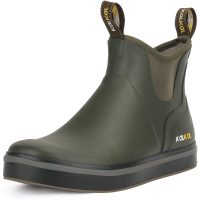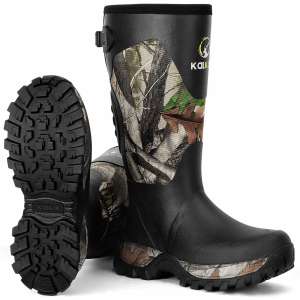Wild pigs are appearing more often in different parts of the United States and elsewhere. When more wild pigs are hunted and a larger number of people are curious about the meat, they tend to ask, “can you eat wild pigs, and is it safe?” The answer is yes, but with some important considerations.
This blog will explain the differences between wild boar and domestic pig meat, discuss safety issues, nutrition, proper preparation, and tips to make it taste good.
Wild Boar Meat vs Domestic Pig Meat
Even though wild pigs and domestic pigs have the same ancestors, the meat tastes different. It has a different texture and is even a different color. That’s how they differ from other businesses:
1. Flavor and Texture
Wild pigs and domesticated pigs are alike in their genetic makeup, but the meat from each is not the same. Wild boar meat is healthier. The animal moves around a lot and feeds on nuts, roots, fruits, grubs, and small creatures. The result is meat that tastes deep, earthy, and lightly nutty or gamey. It is much like venison or beef raised on grass.
Unlike game pork, domestic pig meat remains soft and tends to taste milder. Thanks to high grain in their diet, and not needing to use as much muscle. Its special quality is a higher amount of marbling. Which makes the meat juicier but leads to more fat.
2. Nutritional Value
You get more protein from boar and less saturated fat than from other meats. You get more omega-3 fatty acids, iron, and zinc per serving. Moreover, it doesn’t contain any growth hormones or antibiotics.
3. Appearance
When you look at the meat, wild pig looks a dark reddish burgundy, compared to domestic pork, which is pale in color. The fact that hog meat is darker points to greater levels of myoglobin, a result of the pig’s constant exercise. Chefs and hunters see wild boar as a suitable substitute for store-bought pork due to its richness, nutrients, and great taste.
Can You Eat Wild Pigs?
Yes, you can eat wild game, and if they’re cooked right, they can be both flavorful and healthy. Still, there are things to think about before you eat wild hog meat.
Consumers and hunters need to be cautious that wild pig meat may carry parasites, bacteria, and various diseases not found in regular pork.
Is It Safe to Eat The Meat?
People have safely eaten wild pig meat for centuries. Compared to farm-raised pork, grass-fed pork has a leaner, deeper, tastier taste. You should never eat game until it has been properly dressed, kept cool, and cooked. Because wild pigs are not kept in pens or yards, they can feed on all sorts of things, such as roots and carrion. As a result, they can pick up diseases from animals that might be shared with humans.
Inspection for infection should be done during field dressing to ensure the meat is safe. Wear gloves, try not to touch blood, and never eat uncooked or raw wild pork. Handling meat safely is a necessary thing to do.
Are Wild Pigs Good to Eat?
There are some benefits of eating wild pigs: the high protein and iron content in game makes it a healthy choice for athletes, hunters, and anyone on paleo, keto, or low-carb diets.
Pigs eat whatever is available in nature: acorns, tubers, fruits, and small animals. As a result, free-range pork is higher in nutrition and contains fewer contaminants.
Wild pigs are different from other meats—they have a stronger, earthy flavor and firmer texture, making it an excellent choice for roasts, sausages, and stews.
Naturally has fewer fat and calories per serving than local pork, mostly from pigs that are not fully grown.
Though they are edible, there are some risks to be aware of:
- Trichinella spiralis, a parasitic roundworm, causes Trichinosis (trichinosis. Symptoms can include nausea, fever, and muscle pain.
- Brucellosis, a bacterial disease that can cause fever, fatigue, and joint pain in humans.
- Pseudorabies, not harmful to humans,but it can spread to livestock and pets.
- Tularemia, a bacterial infection that can enter through cuts or be inhaled during field dressing.
Does Freezing Meat Kill the Trichinosis in Meat?
Despite what is commonly thought, freezing wild pig meat never kills trichinella. There are Trichinella strains in wild hogs that can stand up to freezing temperatures for several days or weeks.
Trichinella can be eliminated from the food you eat only through proper cooking. Wild pork should always be cooked to 160°F (71°C) inside. A meat thermometer is the best way to check. As long as the meat is cooked well throughout, smoking, slow cooking, and grilling can be used.
Can You Eat All Parts of a Wild Pig?
Most parts of the wild pig are edible and can be quite delicious:
- Shoulders and hams: Great for slow roasts, pulled pork, or smoking.
- Backstraps (loin): Lean and tender—ideal for searing or grilling as steaks.
- Ribs: Meaty and flavorful, especially when slow-cooked with marinades.
- Legs and neck: Excellent for ground meat, stews, or braises.
- Fat (lard): Can be rendered for cooking, though wild pig fat is denser and less abundant than domestic pig fat.
You should only consume things like liver, heart, and kidneys if the animal is healthy. Check these organs for any discoloration, cysts, or unusual smells each time. If you are unsure, throw them out.
Spots that show disease, pus, or worms are a concern. Eating wild pig intestines should be avoided unless they are cleaned and cooked thoroughly, even better if the pigs have been tested.

What Should You Know When Handling Wild Pig Meat?
Taking care of food before cooking is just as important as cooking it right. Wild pigs have more infections than domesticated animals. And doing field practices poorly can make good meat dangerous. If wild pigs are your quarry, remember these important things.
Field Dressing Tips
- Wear gloves: Always put on nitrile or latex gloves to protect yourself before field dressing a hunting animal, to help you stay away from blood, urine, and body fluids that could have zoonotic diseases.
- Avoid contamination: To avoid contact with bacteria, always cut your meat by using a new, clean knife for gutting and skinning. Take extreme care so that the intestines or bladder are not punctured. Always use fresh water or wipes designed to clean between uses of your tools.
- Cool the carcass quickly: Don’t let the carcass stay warm. Since wild pig meat is leaner, cooling it quickly is important. Within a half hour of harvest, work to remove the hide and then quarter the animal. A cooler covered with ice or a well-ventilated shady area is a good place to store meat until its temperature is 40°F (4°C) or colder. In warmer climates, chill your water bottles for an hour. And place them in the cooler instead of putting the meat under ice water. This is to avoid affecting its taste and texture.
How to Know if the Meat Is Still Good to Eat?
Check for these signs before cooking or freezing:
- Smell: Fresh wild pig meat should smell clean or slightly metallic. A sour, ammonia, or rotten odor means bacterial spoilage—discard immediately.
- Color: Good meat will have a deep burgundy or dark red tone. Avoid meat that appears green, gray, or has blackened patches.
- Texture: Touch the surface—the meat should be moist and firm. Sticky, slA sticky tacky texture is a warning of microbial growth.
- Fat: Healthy fat should be off-white to light yellow. If it’s deep yellow, waxy, or smells rancid, the meat is likely too old or poorly stored.
Extra Tip:
If you’re unsure about the pig’s health or encounter abnormalities (e.g., cysts in the meat, swollen lymph nodes, or unusual liver discoloration), freeze a sample and consult a local wildlife agency or meat inspector. Also, keep your kill log (date, location, weight, sex) to track potential outbreaks or patterns in your region.
How to Cook Wild Hog Meat?
You must prepare wild pig meat correctly to protect yourself and enjoy its very best flavor. The meat from wild hogs doesn’t soften or flavor on its own. So, it must be handled carefully for tenderness and seasoning.
Safe Cooking Practices
The internal temperature of wild hogs should always reach 160°F (71°C). As a result, Trichinella spiralis and Salmonella are no more.
For best results, place the thermometer’s probe in the coldest area of the cut. Reaching the proper cooking temperature is the most reliable way, since wild meat can stay pink even then.
Cooking by Cut
- Shoulders (Boston butt/picnic roast): Best for braising, slow roasting, or pulled pork. Cook low and slow—300°F (150°C) for 3–5 hours—with acidic ingredients like tomatoes, vinegar, or citrus to help break down collagen.
- Backstraps and tenderloins: Ideal for grilling or pan-searing. These lean cuts cook fast—medium-rare to medium is best (130–140°F), but only for tested meat from younger pigs. Otherwise, cook thoroughly.
- Ribs: Marinate for 24 hours in apple cider vinegar, garlic, and brown sugar, then smoke at 225°F (107°C)for 5–6 hours until tender.
- Ground meat: Mix with 20–30% pork fat for sausages or burgers. Season generously with salt, pepper, fennel, and chili flakes.
Pro Flavor Boosters
- Brining: Soak meat for 12–24 hours in a saltwater brine (1 cup salt per gallon) with crushed garlic, bay leaves, and citrus slices. This adds moisture and reduces gaminess.
- Herbs & aromatics: Use strong, earthy herbs like thyme, oregano, sage, and rosemary. Pair with onion, garlic, shallots, and smoked paprika.
- Liquids: Braise in beer, red wine, apple juice, or broth. These add flavor and tenderize tough cuts.
Conclusion
So, can you eat wild pigs? Yes, and in fact, wild hog meat can be a lean, flavorful alternative to farm-raised pork. However, wild hog meat safety depends on how well you handle, store, and cook the meat.
Make sure to:
- Inspect meat for spoilage.
- Avoid cross-contamination during field dressing.
- Always cook to 160°F to kill any parasites.
- Pair wild pork with bold flavors and slow cooking techniques.
By taking the right precautions, wild pigs can be a rewarding addition to your wild game menu. They are packed with nutrients, free of hormones, and bursting with natural flavor. Whether you’re a hunter or just an adventurous cook, wild hog might be the next big thing on your plate.





















Leave a reply